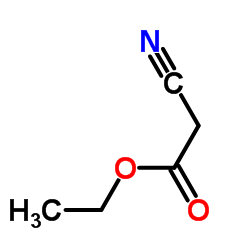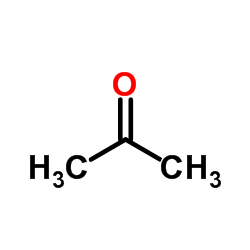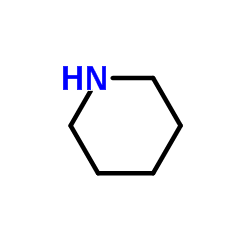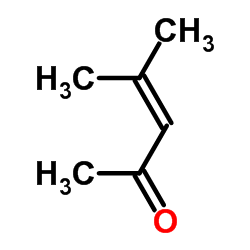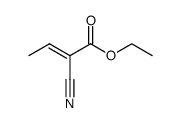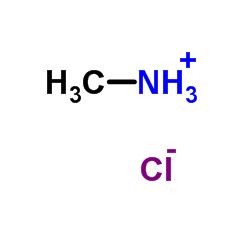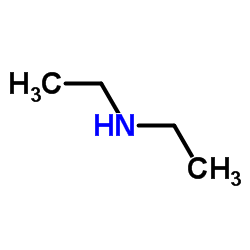2-Butenoic acid,2-cyano-3-methyl-, ethyl ester
Modify Date: 2024-01-03 23:05:38
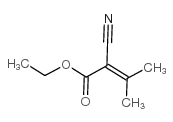
2-Butenoic acid,2-cyano-3-methyl-, ethyl ester structure
|
Common Name | 2-Butenoic acid,2-cyano-3-methyl-, ethyl ester | ||
|---|---|---|---|---|
| CAS Number | 759-58-0 | Molecular Weight | 153.17800 | |
| Density | 1.014 g/mL at 25ºC(lit.) | Boiling Point | 98-99ºC1 mm Hg(lit.) | |
| Molecular Formula | C8H11NO2 | Melting Point | ca 20℃ | |
| MSDS | Chinese USA | Flash Point | 224 °F | |
| Symbol |

GHS07 |
Signal Word | Warning | |
| Name | ethyl 2-cyano-3-methylcrotonate |
|---|---|
| Synonym | More Synonyms |
| Density | 1.014 g/mL at 25ºC(lit.) |
|---|---|
| Boiling Point | 98-99ºC1 mm Hg(lit.) |
| Melting Point | ca 20℃ |
| Molecular Formula | C8H11NO2 |
| Molecular Weight | 153.17800 |
| Flash Point | 224 °F |
| Exact Mass | 153.07900 |
| PSA | 50.09000 |
| LogP | 1.40948 |
| Index of Refraction | n20/D 1.464(lit.) |
| Storage condition | 2-8℃ |
Synonym: Section 2 - COMPOSITION, INFORMATION ON INGREDIENTS
Risk Phrases: 36/37/38 Section 3 - HAZARDS IDENTIFICATION EMERGENCY OVERVIEW
Irritating to eyes, respiratory system and skin. Potential Health Effects Eye: Causes eye irritation. Skin: Causes skin irritation. Ingestion: May cause irritation of the digestive tract. The toxicological properties of this substance have not been fully investigated. Inhalation: Causes respiratory tract irritation. The toxicological properties of this substance have not been fully investigated. Chronic: Not available. Section 4 - FIRST AID MEASURES Eyes: Flush eyes with plenty of water for at least 15 minutes, occasionally lifting the upper and lower eyelids. Get medical aid. Skin: Get medical aid. Flush skin with plenty of water for at least 15 minutes while removing contaminated clothing and shoes. Ingestion: Get medical aid. Wash mouth out with water. Inhalation: Remove from exposure and move to fresh air immediately. If not breathing, give artificial respiration. If breathing is difficult, give oxygen. Get medical aid. Notes to Physician: Section 5 - FIRE FIGHTING MEASURES General Information: As in any fire, wear a self-contained breathing apparatus in pressure-demand, MSHA/NIOSH (approved or equivalent), and full protective gear. Extinguishing Media: Use water spray, dry chemical, carbon dioxide, or chemical foam. Section 6 - ACCIDENTAL RELEASE MEASURES General Information: Use proper personal protective equipment as indicated in Section 8. Spills/Leaks: Absorb spill with inert material (e.g. vermiculite, sand or earth), then place in suitable container. Section 7 - HANDLING and STORAGE Handling: Avoid breathing dust, vapor, mist, or gas. Avoid contact with skin and eyes. Storage: Store in a cool, dry place. Store in a tightly closed container. Section 8 - EXPOSURE CONTROLS, PERSONAL PROTECTION Engineering Controls: Use adequate ventilation to keep airborne concentrations low. Exposure Limits CAS# 759-58-0: Personal Protective Equipment Eyes: Not available. Skin: Wear appropriate protective gloves to prevent skin exposure. Clothing: Wear appropriate protective clothing to prevent skin exposure. Respirators: Follow the OSHA respirator regulations found in 29 CFR 1910.134 or European Standard EN 149. Use a NIOSH/MSHA or European Standard EN 149 approved respirator if exposure limits are exceeded or if irritation or other symptoms are experienced. Section 9 - PHYSICAL AND CHEMICAL PROPERTIES Physical State: Clear liquid Color: colorless to slightly yellow Odor: Not available. pH: Not available. Vapor Pressure: Not available. Viscosity: Not available. Boiling Point: 120 - 122 deg C @ 2 Freezing/Melting Point: Not available. Autoignition Temperature: Not available. Flash Point: 107 deg C ( 224.60 deg F) Explosion Limits, lower: Not available. Explosion Limits, upper: Not available. Decomposition Temperature: Solubility in water: immiscible with water Specific Gravity/Density: 1.0140g/cm3 Molecular Formula: C8H11NO2 Molecular Weight: 153.0825 Section 10 - STABILITY AND REACTIVITY Chemical Stability: Not available. Conditions to Avoid: Incompatible materials. Incompatibilities with Other Materials: Strong oxidizing agents, strong bases. Hazardous Decomposition Products: Carbon monoxide, oxides of nitrogen, carbon dioxide. Hazardous Polymerization: Has not been reported Section 11 - TOXICOLOGICAL INFORMATION RTECS#: CAS# 759-58-0 unlisted. LD50/LC50: Not available. Carcinogenicity: Ethyl 2-cyano-3-methyl-2-butenoate - Not listed by ACGIH, IARC, or NTP. Section 12 - ECOLOGICAL INFORMATION Section 13 - DISPOSAL CONSIDERATIONS Dispose of in a manner consistent with federal, state, and local regulations. Section 14 - TRANSPORT INFORMATION IATA No information available. IMO No information available. RID/ADR No information available. Section 15 - REGULATORY INFORMATION European/International Regulations European Labeling in Accordance with EC Directives Hazard Symbols: XI Risk Phrases: R 36/37/38 Irritating to eyes, respiratory system and skin. Safety Phrases: S 26 In case of contact with eyes, rinse immediately with plenty of water and seek medical advice. S 37/39 Wear suitable gloves and eye/face protection. WGK (Water Danger/Protection) CAS# 759-58-0: No information available. Canada None of the chemicals in this product are listed on the DSL/NDSL list. CAS# 759-58-0 is not listed on Canada's Ingredient Disclosure List. US FEDERAL TSCA CAS# 759-58-0 is not listed on the TSCA inventory. It is for research and development use only. SECTION 16 - ADDITIONAL INFORMATION N/A |
| Symbol |

GHS07 |
|---|---|
| Signal Word | Warning |
| Hazard Statements | H302 + H312 + H332-H315-H319-H335 |
| Precautionary Statements | P261-P280-P305 + P351 + P338 |
| Personal Protective Equipment | Eyeshields;Faceshields;full-face respirator (US);Gloves;multi-purpose combination respirator cartridge (US);type ABEK (EN14387) respirator filter |
| Hazard Codes | Xn |
| Risk Phrases | R20/21/22 |
| Safety Phrases | S26-S37-S39 |
| RIDADR | UN 3276 |
| WGK Germany | 3 |
| Packaging Group | III |
| Hazard Class | 6.1 |
| HS Code | 2926909090 |
|
~96% 
2-Butenoic acid... CAS#:759-58-0 |
| Literature: Ying, An-Guo; Wu, Cheng-Lin; He, Guang-Hong Asian Journal of Chemistry, 2012 , vol. 24, # 2 p. 653 - 656 |
|
~82% 
2-Butenoic acid... CAS#:759-58-0 |
| Literature: Boehringer Ingelheim Pharmaceuticals, Inc. Patent: US6136982 A1, 2000 ; |
|
~% 
2-Butenoic acid... CAS#:759-58-0 |
| Literature: Polish Journal of Chemistry, , vol. 52, p. 1389 - 1394 |
|
~% 
2-Butenoic acid... CAS#:759-58-0 |
| Literature: Journal of Organic Chemistry, , vol. 26, p. 2738 - 2740 |
|
~% 
2-Butenoic acid... CAS#:759-58-0 |
| Literature: Chemische Berichte, , vol. 48, p. 261 |
|
~% 
2-Butenoic acid... CAS#:759-58-0 |
| Literature: Chemische Berichte, , vol. 48, p. 261 |
|
~% 
2-Butenoic acid... CAS#:759-58-0 |
| Literature: Chemische Berichte, , vol. 33, p. 3532 |
| HS Code | 2926909090 |
|---|---|
| Summary | HS:2926909090 other nitrile-function compounds VAT:17.0% Tax rebate rate:9.0% Supervision conditions:none MFN tariff:6.5% General tariff:30.0% |
|
Phospha-Michael additions to activated internal alkenes: steric and electronic effects.
J. Org. Chem. 77(3) , 1378-85, (2012) The addition of P(O)-H bonds to internal alkenes has been accomplished under solvent-free conditions without the addition of a catalyst or radical initiator. Using a prototypical secondary phosphine o... |
| ethyl 2-cyano-3-methylbut-2-enoate |
| MFCD00009135 |
